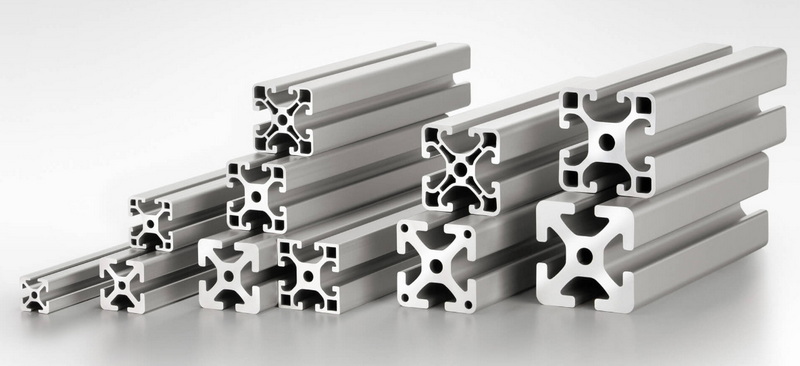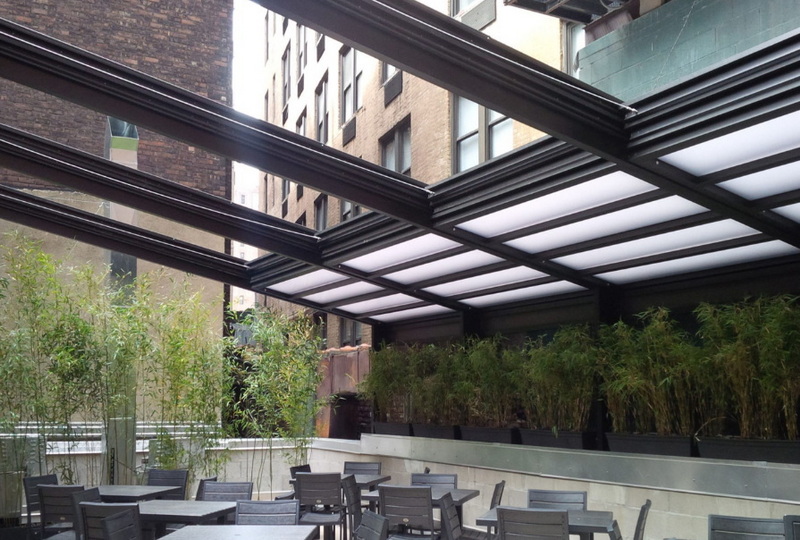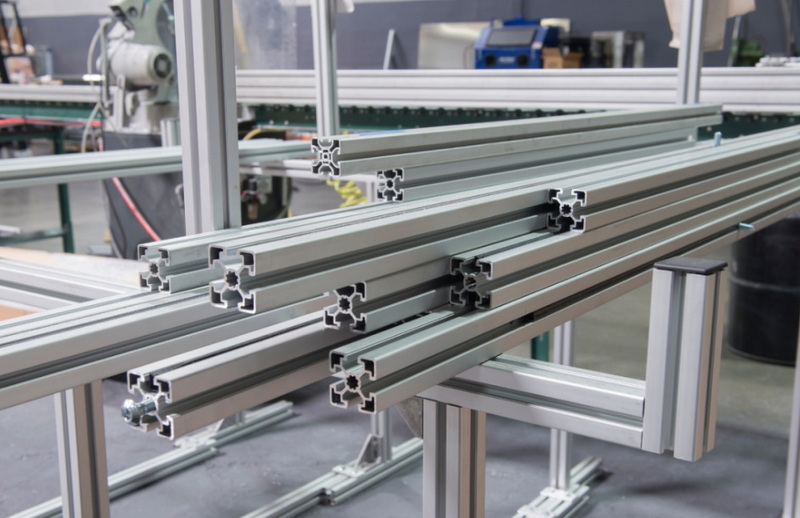Content Menu
● Understanding Aluminum Extrusion
● Key Benefits of Aluminum Extrusion Covers
● Applications of Aluminum Extrusion Covers
● The Manufacturing Process of Aluminum Extrusions
● Comparison with Other Materials
● Innovations in Aluminum Extrusion
● Economic Considerations
● Conclusion
● Frequently Asked Questions
>> 1. What types of products can be made from aluminum extrusions?
>> 2. How does the corrosion resistance of aluminum compare to other metals?
>> 3. Can aluminum extrusions be customized?
>> 4. Is aluminum environmentally friendly?
>> 5. What industries commonly use aluminum extrusion covers?
Aluminum extrusion covers are becoming increasingly popular in various industries due to their unique properties and advantages over other materials. This article explores the reasons why aluminum extrusion covers are often the preferred choice, highlighting their benefits, applications, and the manufacturing process involved.

Understanding Aluminum Extrusion
Aluminum extrusion is a manufacturing process that involves shaping aluminum by forcing it through a die. This process allows for the creation of complex shapes and profiles that are both lightweight and strong. The resulting products, known as aluminum extrusions, can be used in a wide range of applications, from construction to automotive parts.
The versatility of aluminum extrusions is primarily due to the malleability of aluminum as a metal. When heated to a specific temperature, aluminum becomes soft enough to be easily shaped without cracking or breaking. This property is crucial in producing intricate designs that meet specific functional requirements.
Key Benefits of Aluminum Extrusion Covers
Aluminum extrusion covers offer numerous advantages when compared to covers made from other materials such as plastic, steel, or wood. Here are some of the primary benefits:
1. Lightweight Yet Strong
Aluminum is significantly lighter than steel or other metals, making aluminum extrusion covers easy to handle and install. Despite their light weight, aluminum extrusions maintain high strength levels, making them suitable for structural applications where weight reduction is crucial.
For instance, in the automotive industry, reducing weight can lead to improved fuel efficiency and performance. This characteristic also makes aluminum ideal for applications in aerospace, where every ounce counts.
2. Corrosion Resistance
One of the standout features of aluminum is its natural corrosion resistance. When exposed to moisture and air, aluminum forms a protective oxide layer that prevents rusting. This characteristic makes aluminum extrusion covers ideal for outdoor or marine applications where exposure to harsh environments is common.
Unlike steel, which requires protective coatings to prevent rusting, aluminum can withstand environmental stress without significant degradation over time. This property not only extends the lifespan of products but also reduces maintenance costs associated with frequent repairs or replacements.
3. Design Flexibility
The extrusion process allows for great design flexibility. Manufacturers can create custom shapes tailored to specific needs without compromising strength or functionality. This flexibility means that designers can optimize the performance and aesthetics of their products.
Moreover, the ability to produce complex geometries enables innovation in product design across various industries. For example, in electronics, intricate cooling channels can be integrated into the design of heat sinks, enhancing thermal management capabilities.
4. Excellent Thermal Conductivity
Aluminum has superior thermal conductivity compared to many other materials. This property is particularly beneficial for applications requiring heat dissipation, such as electronic enclosures or heat sinks.
In electronics, efficient heat dissipation is critical for maintaining performance and reliability. Aluminum extrusion covers can be designed with fins or other features that maximize surface area, allowing for better airflow and heat transfer.
5. Sustainability
Aluminum is highly recyclable, making it an environmentally friendly choice. The recycling process requires only a fraction of the energy needed to produce new aluminum from raw materials, contributing to lower carbon emissions and resource conservation.
This sustainability aspect aligns with global efforts toward reducing waste and promoting circular economies. By choosing aluminum extrusion covers, companies can enhance their sustainability credentials while benefiting from the material's performance characteristics.
Applications of Aluminum Extrusion Covers
Aluminum extrusion covers are used in a variety of industries due to their versatility and performance characteristics:
- Construction: Used in window frames, roofing systems, and structural supports where durability and aesthetic appeal are essential.
- Automotive: Employed in vehicle frames, body panels, and heat exchangers where weight savings contribute to overall performance.
- Electronics: Ideal for housing electronic components due to their thermal management capabilities; they help dissipate heat effectively.
- Transportation: Used in railings, trailers, and bus frames where weight savings are essential for efficiency and safety.
- Consumer Products: Found in furniture, appliances, and decorative elements where style meets functionality.
The Manufacturing Process of Aluminum Extrusions
The process of creating aluminum extrusions involves several key steps:
1. Billet Preparation: Aluminum logs (billets) are heated to a specific temperature to soften them for extrusion.
2. Extrusion: The heated billet is placed in an extrusion press where it is forced through a die to create the desired shape.
3. Cooling: The extruded profile is cooled down using air or water cooling methods.
4. Stretching: The extruded shape is stretched to eliminate any internal stresses that may have developed during the process.
5. Cutting: The extruded profiles are cut into specified lengths for further processing.
6. Finishing: Surface treatments such as anodizing or powder coating may be applied to enhance appearance and durability.
Each step in this process is crucial for ensuring that the final product meets quality standards while retaining its desirable properties such as strength and corrosion resistance.

Comparison with Other Materials
When comparing aluminum extrusion covers with other materials like plastic or steel, several factors come into play:
| Feature | Aluminum Extrusion Covers | Plastic Covers | Steel Covers |
| Weight | Lightweight | Lightweight | Heavy |
| Corrosion Resistance | High | Low | Moderate |
| Design Flexibility | High | Moderate | Low |
| Thermal Conductivity | Excellent | Poor | Moderate |
| Recyclability | High | Low | Moderate |
This comparison illustrates that while each material has its own set of advantages and disadvantages, aluminum consistently outperforms others in key areas such as strength-to-weight ratio and environmental impact.
Innovations in Aluminum Extrusion
As technology advances, so does the potential for innovations within the field of aluminum extrusion. New techniques such as 3D printing combined with traditional extrusion processes are being explored to create even more complex shapes with enhanced properties.
Additionally, advancements in surface treatment technologies allow manufacturers to enhance the aesthetic qualities of aluminum extrusions while improving their resistance against wear and tear. These innovations not only expand the possibilities for product design but also ensure that aluminum continues to meet evolving industry standards.
Economic Considerations
While aluminum extrusion covers may have higher initial costs compared to some alternatives like plastic or wood, their long-term benefits often outweigh these expenses. The durability and low maintenance requirements associated with aluminum lead to cost savings over time due to reduced replacement needs and lower maintenance efforts.
Furthermore, as industries increasingly prioritize sustainability practices, investing in recyclable materials like aluminum can enhance a company's reputation while aligning with consumer preferences for environmentally friendly products.
Conclusion
In conclusion, aluminum extrusion covers present a compelling option for various applications due to their lightweight nature, strength, corrosion resistance, design flexibility, excellent thermal conductivity, and sustainability. As industries continue to seek efficient and effective solutions for their needs, aluminum extrusions will remain at the forefront of material choices.
By leveraging these advantages—alongside ongoing innovations—companies can optimize their product offerings while contributing positively toward environmental sustainability goals.

Frequently Asked Questions
1. What types of products can be made from aluminum extrusions?
Aluminum extrusions can be used to create a wide range of products including window frames, structural components in buildings, automotive parts like chassis and panels, electronic housings such as heat sinks and enclosures.
2. How does the corrosion resistance of aluminum compare to other metals?
Aluminum naturally forms a protective oxide layer that prevents rusting when exposed to moisture and air; this makes it more corrosion-resistant than many other metals like steel which requires protective coatings against rusting.
3. Can aluminum extrusions be customized?
Yes! One significant advantage of aluminum extrusion is the ability to create custom shapes tailored specifically for individual requirements without compromising strength or functionality—allowing designers maximum flexibility during product development.
4. Is aluminum environmentally friendly?
Yes! Aluminum is highly recyclable; it requires significantly less energy during recycling compared with producing new aluminum from raw materials—making it an environmentally friendly choice that contributes positively towards reducing carbon emissions while conserving resources effectively!
5. What industries commonly use aluminum extrusion covers?
Common industries include construction (for window frames), automotive manufacturing (for vehicle bodies), electronics production (for housing electronic components), transportation services (for railings), consumer goods manufacturing (for furniture)—demonstrating versatility across diverse applications!






















